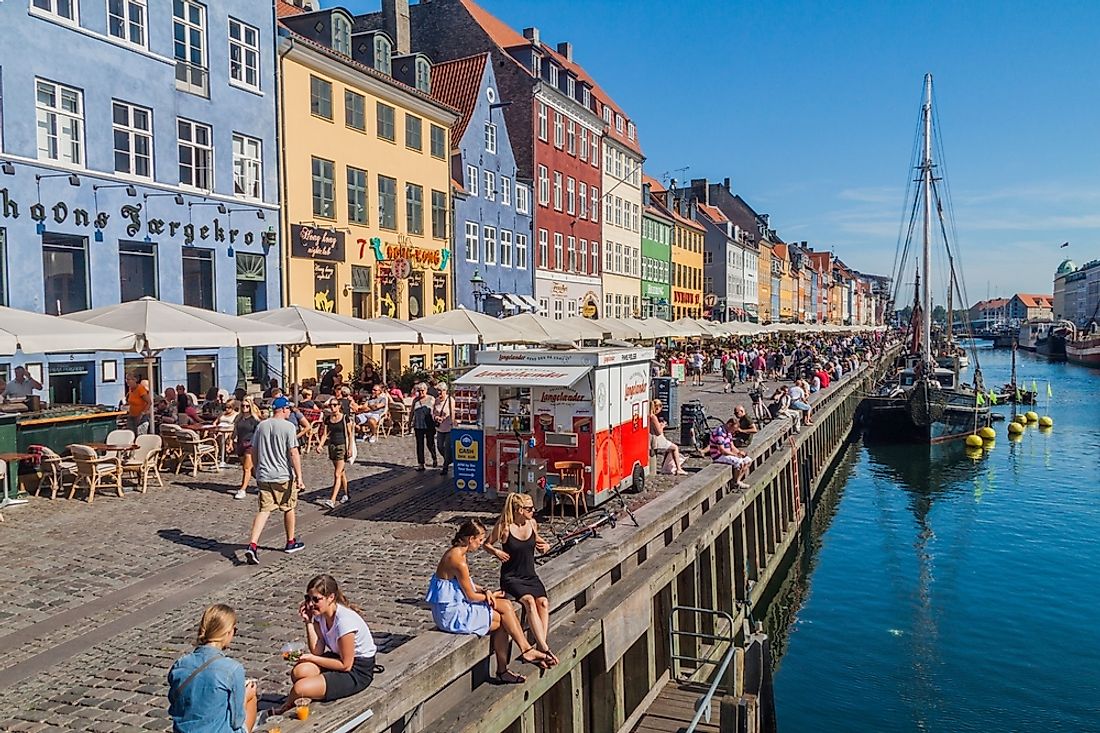Demographics and Ethnic Groups of Denmark

Denmark is a sovereign country situated in the northern part of Europe, which is comprised of two autonomous constituent countries of Greenland and the Faroe Islands. The country shares its borders with Germany, Norway, and Sweden. In 2018, the country's population was about 5.8 million inhabitants.
In Denmark, there are no official statistics on different ethnic groups, but it is estimated that 86.7% of the population traces their ancestry to Danes, which is defined as having at least one of the parents having the citizenship of Denmark or who was born in Denmark. The other 13.3% have a foreign background which is defined as descendants of immigrants or recent immigrants. Immigrants in the country include people from Poland, Turkey, Romania, Iraq, Germany, Syria, Somalia, Pakistan, Lebanon, and Bosnia and Herzegovina, among other countries.
Danish
It is estimated that at least 86.7% of the population of Denmark has at least one Danish parent. This makes it one of the world's more homogenous countries.
Minority Groups in Denmark
Chinese
People of Chinese origin form one of the smallest groups in Denmark. The earliest account of immigrants moving from China to Denmark was in 1902.
Jews
Jews living in Denmark account for a tiny proportion of the country’s population, and there are about 6,000 people of Jewish descent in Denmark. The population of Jews increased significantly before the Holocaust when the ordinary citizens of Denmark established the Danish resistance movement which played a critical role in evacuating more than 8,000 Jews to Sweden through the sea because Sweden was more neutral and as a result, many Danish Jews were saved. The first settlement of Jews in Denmark was established in 1619 when Dioni, a Jewish merchant was allowed to settle in the present-day German state of Schleswig-Holstein.
Arabs
Arabs in Denmark refer to citizens who are descendants of people from the Arab world. The majority trace their origin to countries such as Morocco, Palestine, Iraq, Syria, and Lebanon, among other countries in the Middle East. The total number of Arabs in Denmark is about 121,000 as of 2017, and they were found mainly in Copenhagen, Aarhus, and Jutland. The largest numbers of Arabs in the country were the Iraqis who consist of the descendants and the immigrants who came from Iraq.
Pakistanis
Danish of Pakistanis origin form the 5th largest group in the country, and as of 2013, there were 12,765 Pakistani migrants and 9,903 born of Pakistani descendants. Early migrants of Pakistani arrived in Denmark between 1960s and 1970s mainly as migrant workers, and the majority came from Punjab particularly in Kharian and the surrounding area.
Languages In Denmark
Denmark has one official language, which is Danish. There are several other minority languages spoken throughout the country and its dependent territories, and they include German, Faroese, and Greenlandic, among others. The majority of the Danish people also speak English, and it is mandatory for pupils in the first grade of the public Elementary schools. Other languages such as French and German are given as an option, and most of the Danish students learn German. It is estimated that about 47% of the Danes can converse in the German language.











